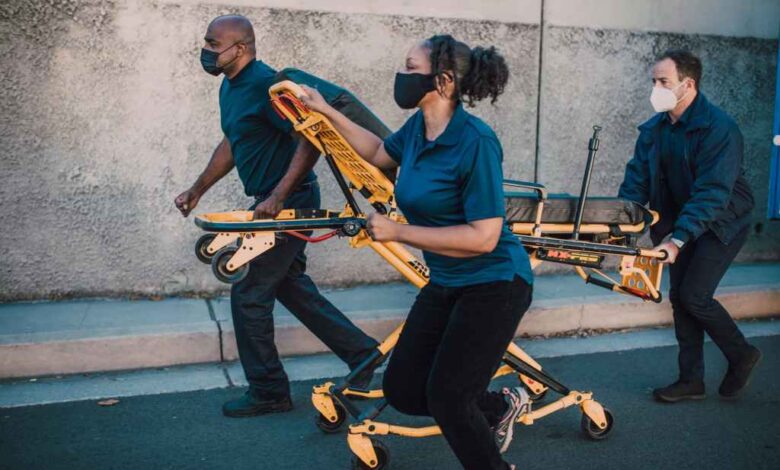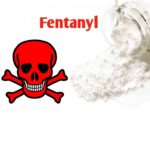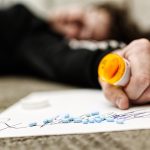Fentanyl Overdose Symptômes and Signs

What is fentanyl?
Fentanyl is a powerful synthetic opioid that is 80-100 times stronger than morphine. Pharmaceutical fentanyl was developed for pain management treatment of cancer patients, applied in a patch on the skin. Because of its powerful opioid properties, Fentanyl is also diverted for abuse.
Fentanyl is also made and used illegally by drug cartels who add it to fake prescription pills and other illicit drugs like heroin, cocaine, methamphetamine, and MDMA to increase its potency or be disguised as highly potent drugs. Many users believe that they are purchasing the actual drugs and actually don’t know that they are purchasing fentanyl – which often results in overdose deaths. Clandestinely-produced fentanyl is primarily manufactured in Mexico and China.
Street names of fentanyl include:
- Apace
- China Girl
- China Town
- China White
- Dance Fever
- Goodfellas
- Great Bear
- He-Man
- Poison and Tango & Cash
How is it used?
When prescribed by a doctor, fentanyl can be given as a shot, a patch that is put on a person’s skin, or as lozenges that are sucked like cough drops. The illegally used fentanyl most often associated with recent overdoses is made in labs. This synthetic fentanyl is sold illegally as a powder, dropped onto blotter paper, put in eye droppers and nasal sprays, or made into pills that look like other prescription opioids.
Prescription fentanyl comes as a lozenge on a handle (Actiq), a sublingual (underneath the tongue) tablet (Abstral), a film (Onsolis), and a buccal (between the gum and cheek) tablet (Fentora) to dissolve in the mouth. Fentanyl is used as needed to treat breakthrough pain but not more often than four times a day. Follow the directions on your prescription label carefully, and ask your doctor or pharmacist to explain any part you do not understand.
Your doctor will probably start you on a low dose of fentanyl and gradually increase your dose until you find the dose that will relieve your breakthrough pain. If you still have pain 30 minutes after using fentanyl films (Onsolis), your doctor may tell you to use another pain medication to relieve that pain and may increase your dose of fentanyl films (Onsolis) to treat your next episode of pain. Talk to your doctor about how well the medication is working and whether you are experiencing any side effects so that your doctor can decide whether your dose should be adjusted.
Do not use fentanyl more than four times a day. Call your doctor if you experience more than four episodes of breakthrough pain per day. Your doctor may need to adjust the dose of your other pain medication(s) to better control your pain.
Swallow the buccal tablet whole; do not split, chew, or crush. Also do not chew or bite the lozenge on a handle; only suck on this medication as directed.
Do not stop using fentanyl without talking to your doctor. Your doctor may decrease your dose gradually. If you suddenly stop using fentanyl, you may experience unpleasant withdrawal symptoms.
How does fentanyl affect the body?
Similar to other opioid analgesics, Fentanyl works by binding to the body’s opioid receptors, which are found in areas of the brain that control pain and emotions. Its effects include extreme happiness, drowsiness, nausea, confusion, constipation, sedation, tolerance, addiction, respiratory depression and arrest, unconsciousness, coma, and death.
Fentanyl Overdose Symptômes and Signs
According to provisional data from CDC’s National Center for Health Statistics, there were an estimated 100,306 drug overdose deaths in the United States during the 12-month period ending in April 2021, an increase of 28.5% from the 78,056 deaths during the same period the year before.
The new data documents that estimated overdose deaths from opioids increased to 75,673 in the 12-month period ending in April 2021, up from 56,064 the year before. Overdose deaths from synthetic opioids (primarily fentanyl) and psychostimulants such as methamphetamine. Fentanyl overdose symptoms and signs include:
- difficulty breathing
- drowsiness or sleepiness
- dizziness
- confusion
- slow, shallow breathing or stopped breathing
- smaller pupils (black circles in the middle of the eyes)
- unable to respond or wake up
In case of overdose, remove the fentanyl from the victim’s mouth and call local emergency services at 911.
While using fentanyl, you should talk to your doctor about having a rescue medication called naloxone readily available (e.g., home, office). Naloxone is used to reverse the life-threatening effects of an overdose. It works by blocking the effects of opiates to relieve dangerous symptoms caused by high levels of opiates in the blood. Your doctor may also prescribe you naloxone if you are living in a household where there are small children or someone who has abused street or prescription drugs.
You should make sure that you and your family members, caregivers, or the people who spend time with you know how to tell or recognize an overdose, how to use naloxone, and what to do until emergency medical help arrives. Your doctor or pharmacist will show you and your family members how to use the medication. Ask your pharmacist for the instructions or visit the manufacturer’s website to get the instructions. If symptoms of an overdose occur, a friend or family member should give the first dose of naloxone, call 911 immediately, and stay with you and watch you closely until emergency medical help arrives. Your symptoms may return within a few minutes after you receive naloxone. If your symptoms return, the person should give you another dose of naloxone. Additional doses may be given every 2 to 3 minutes if symptoms return before medical help arrives.





